Input Devices
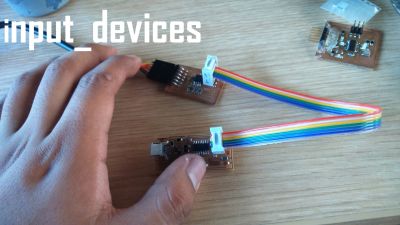
Tools
1.-end mill 1/64'
electronics components
2.-attiny 45'
3.-10k ohm x4
4.- thermistors
5.-pinheader 2x3
6.-pinheader 1x6
7.-1uF capacitor
SOFTWARE
8.-atmel studio 6.2
9.-python
MACHINES
10.-Roland Modela
OTHERS
11.-FTDI wire
7.-AVRISP MKII
7.-ISP TINY
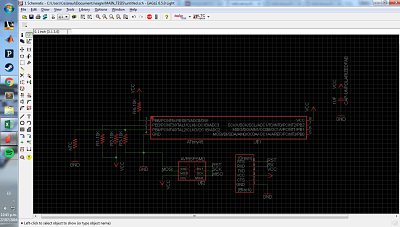
I made a design based on the example (board) in this circuit I used a thermistor and attiny45 microcontroller, I needed two more resistances for the correct range of the temperature,pin headers for conections and no more components are required
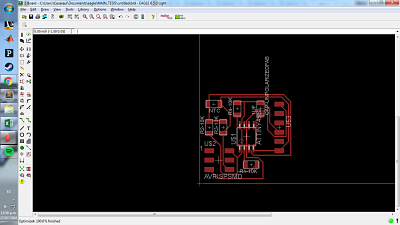
I made the routes for milling , (schematic )and BRD files (BRD)

I made a module temperature (board). based on the board (board) I took the .c code (code) to 6.2 atmel studio to upload it to the microcontroller, in this case the image is a little guide to set atmel studio to use USBtiny Tools-> EXTERNAL Tools-> Arguments; finally when this added tool is only selcciona from Tools-> usbtiny, to upload the code
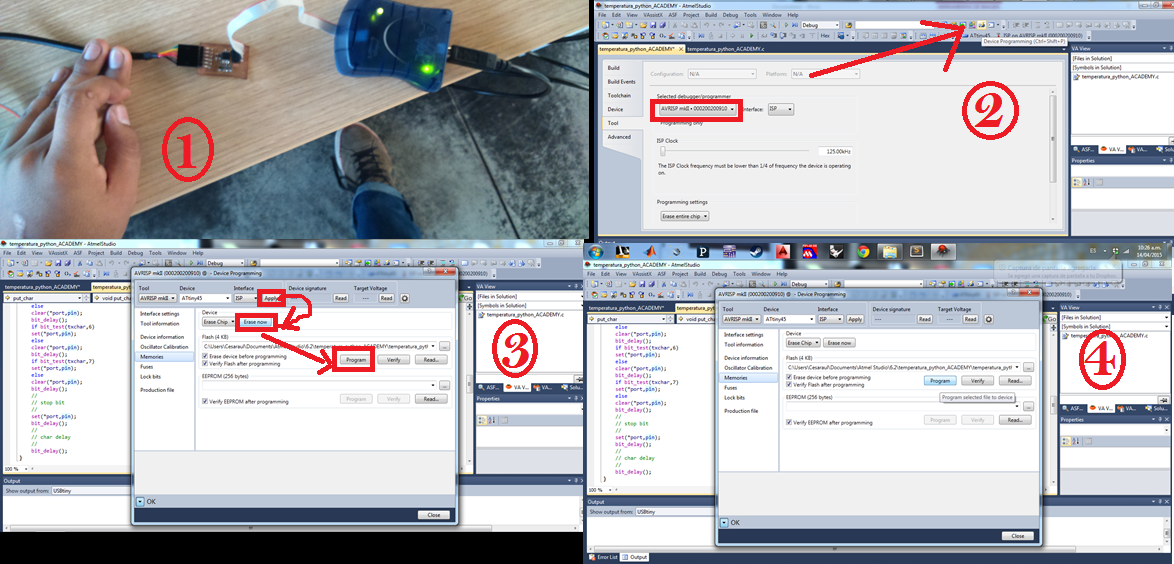
in the case of the AVRISP MKII, only connecting and software must be able to recognize, being himself atmel and the necessary drivers; image shows the seguencia of steps to upload the .hex file

after programming the microcontroller, do the configuration of software that will receive the analogous data sends the microcontroller, so we need to install python, in the image I show a sequence for download (simple) to verify that it works correctly we CMD windows and write python and should look like the version that was installed
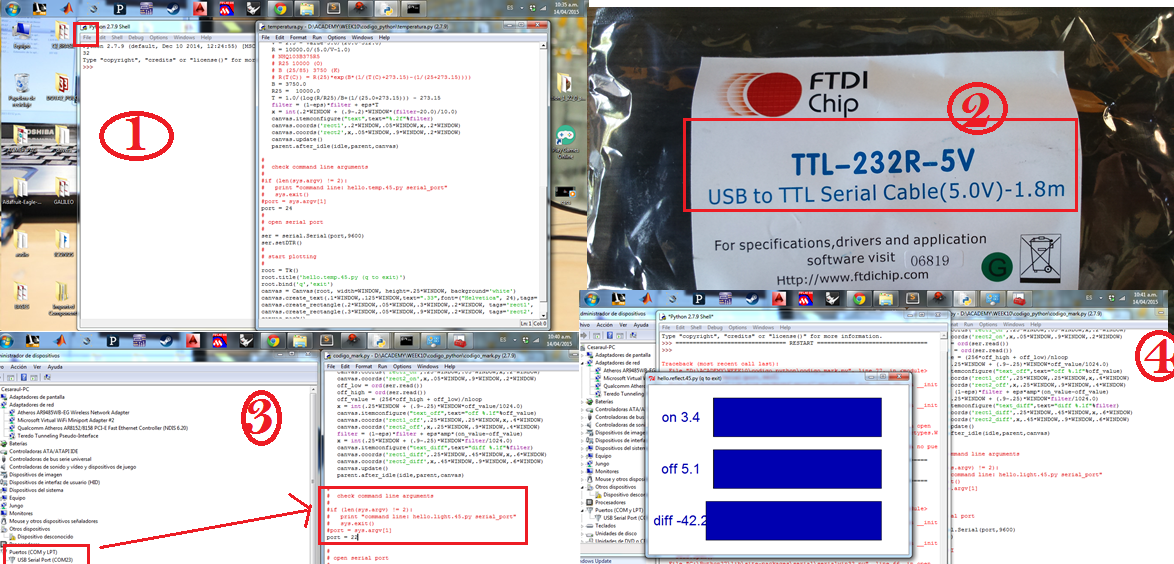
after installing the python, python download the code for the module temperature ((board) we open it in a text editor and let's instructions
if (len(sys.argv) != 2):
# print "command line: hello.temp.45.py serial_port"
# sys.exit())
discussed these lines of code and place the COM port that corresponds begin starting from 0 so will always be less than 1, then run the program